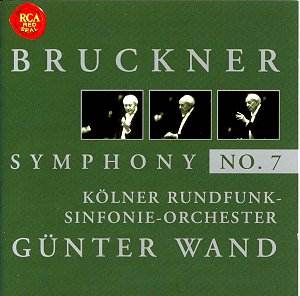This recording comes from Günter Wand’s complete
cycle of Bruckner symphonies, set down in the 1980s. Having been a bit
disappointed by the companion performance of the Sixth Symphony I’m
pleased to report that this account of the Seventh finds Wand back on
his best form.
In general I find the tempi which Wand sets in this
performance have the feel of rightness to them. Equally, the relationship
between the various tempi within a movement is, for the most part, judged
most perceptively. That said, I did feel that the broader passage in
the first movement (track 1) from 7’01" to 10’ 02" was just
a bit too relaxed. I felt that hereabouts the performance teetered on
the edge of becoming becalmed but other listeners may disagree. On the
other hand, later in the same movement (track 1, 18’37") Wand’s
handling of the radiant coda is masterly, building the speed and tension
most impressively.
The following adagio has all the breadth and dignity
one could desire. As I’ve found so often with Wand, he really does slow
movements exceptionally well, presenting them simply, truthfully and
atmospherically. The build up to the great climax (track 2, from 15’
26") is most imposing. At the climax itself Wand eschews the cymbal
clash but so well has the climax been prepared that the overall effect
is in no way spoiled. The coda, intoned by the quartet of Wagner tubas
(18’54"), displays dignified grief and horns, tubas and strings
impart a sonorous glow to the last nine bars of the movement.
If one were to be hypercritical there is a suspicion
of flawed tuning in the lower brass in the scherzo (track 3, 1’46")
but this is a momentary lapse and the movement as a whole bowls along
splendidly with a suitably easeful trio. The beneficent finale is well
played and though I thought Wand could, with advantage, have broadened
the tempo just a fraction at the very end this is, overall, a very successful
reading of the movement.
In summary, this is a well-played performance and a
very authoritative interpretation which can be recommended confidently.
The re-mastered sound is very good. Admirers of this fine Bruckner conductor
need not hesitate.
John Quinn


